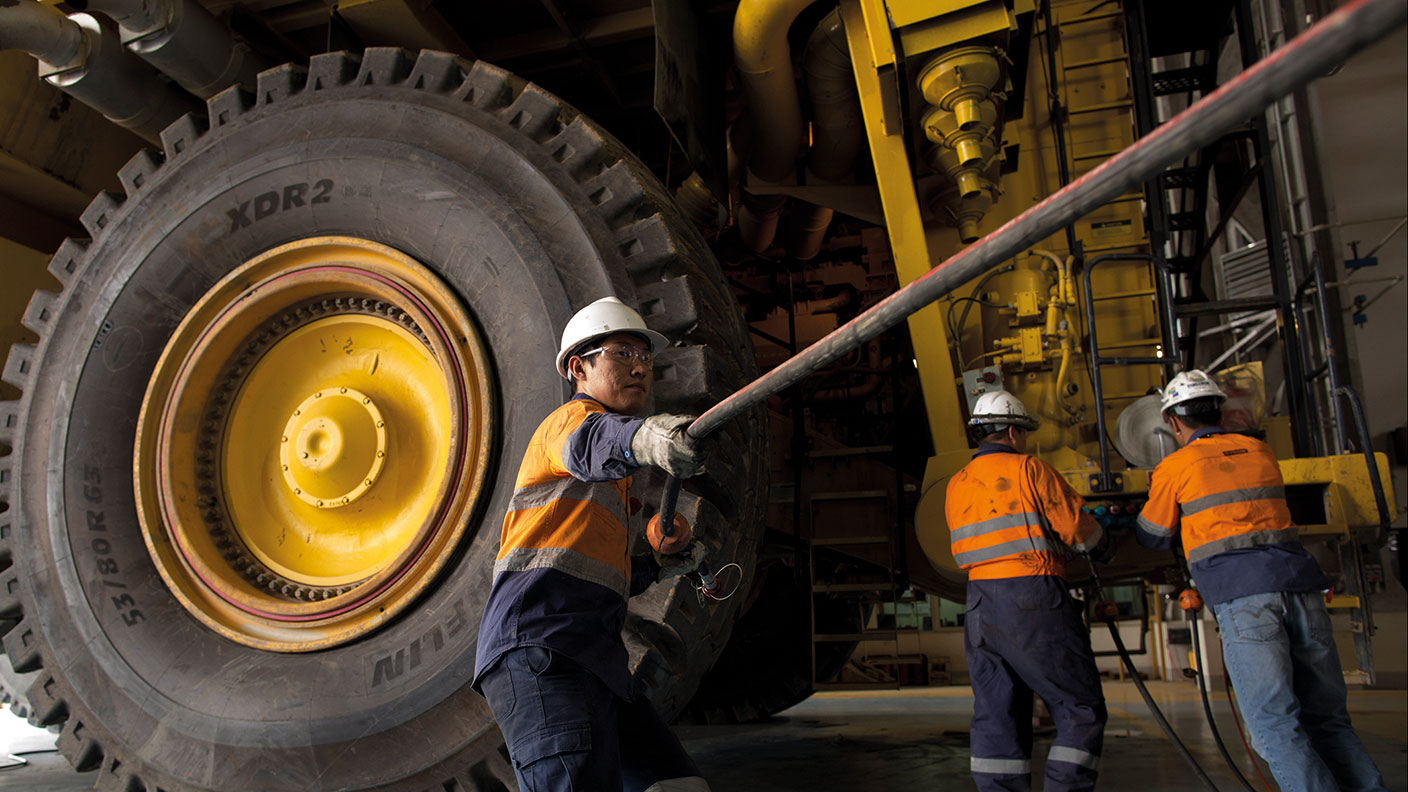The big dividends on offer from mining stocks
Miners have gone from bust to boom and are now paying out some of the biggest dividends in the FTSE 100


FTSE 100 companies will earn a record £169.7bn in 2022, reckons investment platform AJ Bell. In total, they will return £114bn of that to shareholders, which so far looks likely to consist of £81.2bn in dividends and £32.7bn in buybacks. The biggest payer is mining giant Rio Tinto, which shows just how far miners have come since the last commodity cycle. Boom and bust cycles have been a feature of mining ever since humans first discovered the dirt beneath their feet might be valuable. The rise of China in the mid-1990s and early 2000s set off a super cycle, which saw prices boom for the best part of two decades.
Miners borrowed huge sums to expand their output to meet what seemed like never-ending demand. However, when the bubble burst in 2011 and a bear market in commodity prices ensued, miners bore the brunt of the financial fallout. In 2015, Morgan Stanley analysts estimated that between 2005 and 2014, the three largest miners – Rio, BHP and Anglo American – had spent $246bn on capital projects, and as a result, overloaded the market. Prices crashed as supply surged and the trio lost $48bn in total between 2011 and 2014.
Yet that rude awakening set the scene for today’s boom. Miners mothballed extravagant projects and slashed costs. Now they prioritise financial stability and investor returns over growth, eschewing debt-funded capital growth in favour of funding from cashflow. Investors are reaping the benefits. Take copper, used in everything from renewable energy projects to mobile phones. As miners have tightened their belts over the past seven years, the copper supply has dropped even as demand has grown. Former Glencore chief executive Ivan Glasenberg told the Qatar Economic Forum last year that the copper supply needs to double by 2050 to meet demand.
MoneyWeek
Subscribe to MoneyWeek today and get your first six magazine issues absolutely FREE

Sign up to Money Morning
Don't miss the latest investment and personal finances news, market analysis, plus money-saving tips with our free twice-daily newsletter
Don't miss the latest investment and personal finances news, market analysis, plus money-saving tips with our free twice-daily newsletter
A similar story is being played out across other commodities – good news for the big players. BHP (LSE: BHP) and Rio Tinto (LSE: RIO) mine everything from iron ore to rare earth metals. In a volatile, cyclical industry, this diversification is appealing. Rio reported record results for 2021, and declared its highest dividend ever of $10.40 a share, including a $2.47 special dividend. It ended the year with $1.6bn of net cash. Analysts expect a $8.62 payout for 2022, giving a forward yield of 10.9%. In its first half, BHP’s profits jumped, net debt fell to $4.2bn from $12bn and it announced an interim dividend of $1.50. Analysts expect a full-year dividend of $4.34, giving a prospective yield of 9.4%.
These yields may not last if commodity prices start to moderate, but with little debt, these miners have plenty of financial flexibility to balance investor returns and growth spending.
SEE ALSO:
Why investors should consider adding Glencore to their portfolios
Get the latest financial news, insights and expert analysis from our award-winning MoneyWeek team, to help you understand what really matters when it comes to your finances.

Rupert is the former deputy digital editor of MoneyWeek. He's an active investor and has always been fascinated by the world of business and investing. His style has been heavily influenced by US investors Warren Buffett and Philip Carret. He is always looking for high-quality growth opportunities trading at a reasonable price, preferring cash generative businesses with strong balance sheets over blue-sky growth stocks.
Rupert has written for many UK and international publications including the Motley Fool, Gurufocus and ValueWalk, aimed at a range of readers; from the first timers to experienced high-net-worth individuals. Rupert has also founded and managed several businesses, including the New York-based hedge fund newsletter, Hidden Value Stocks. He has written over 20 ebooks and appeared as an expert commentator on the BBC World Service.
-
 Investors will reap long-term rewards from UK equities
Investors will reap long-term rewards from UK equitiesOpinion Nick Train, portfolio manager, Finsbury Growth & Income Trust, highlights three UK equities where he’d put his money
-
 The graphene revolution is progressing slowly but surely
The graphene revolution is progressing slowly but surelyEnthusiasts thought the discovery that graphene, a form of carbon, could be extracted from graphite would change the world. They might've been early, not wrong.
-
 'Investors will reap long-term rewards from being bullish on UK equities'
'Investors will reap long-term rewards from being bullish on UK equities'Opinion Nick Train, portfolio manager, Finsbury Growth & Income Trust, highlights three UK equities where he’d put his money
-
 The graphene revolution is progressing slowly but surely – how to invest
The graphene revolution is progressing slowly but surely – how to investEnthusiasts thought the discovery that graphene, a form of carbon, could be extracted from graphite would change the world. They might've been early, not wrong.
-
 A strong year for dividend hero Murray International – can it continue its winning streak?
A strong year for dividend hero Murray International – can it continue its winning streak?Murray International has been the best-performing global equity trust over the past 12 months, says Max King
-
 The shape of yields to come
The shape of yields to comeCentral banks are likely to buy up short-term bonds to keep debt costs down for governments
-
 The sad decline of investment clubs – and what comes next
The sad decline of investment clubs – and what comes nextOpinion Financial regulation and rising costs are killing off investment clubs that once used to be an enjoyable hobby, says David Prosser
-
 How to profit from the UK leisure sector in 2026
How to profit from the UK leisure sector in 2026The UK leisure sector had a straitened few years but now have cash in the bank and are ready to splurge. The sector is best placed to profit
-
 Who won the streaming wars?
Who won the streaming wars?The battle of the TV and film streaming giants for dominance looks to be entering a final phase. The likely winner may surprise you, says Simon Wilson
-
 'Investors should expect a good year for equities'
'Investors should expect a good year for equities'Opinion The economy is positive, and investors are still cautious, says Max King